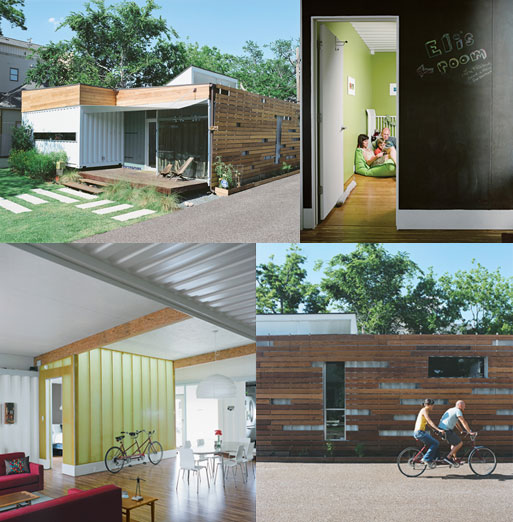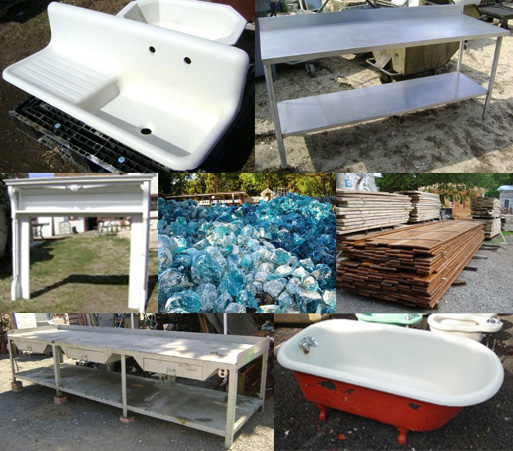Salvaged Building Materials (Examples from Phoenix Commotion)
Written by Katie on September 8, 2009. Permalink
I know that some salvaged building materials don’t exactly ‘fit’ the look of a modern home, but often times they can add more character to a room than something brand new (plus, you know all about how saving items from the landfill is a good thing, so I won’t lecture you on that). NYTimes recently featured an arcticle on Dan Phillips and his construction company, Phoenix Commotion, who together build low-income housing out of salvaged items. Not all of the ideas are applicable in your own home, of course, but it might get your brain thinking about alternative materials for your next remodeling project.
photos (all by Michael Stravato for The New York Times), left to right, top to bottom:
Wood-burning stove from an old ship installed in a new home.
Wine Bottles function like stained glass in a Dutch Door.
Countertop made from slices of osage orange wood, a local East Texas material.
Scrap wood for siding.
Old shingles, arranged by color, reused.
[via NYTimes.com]














